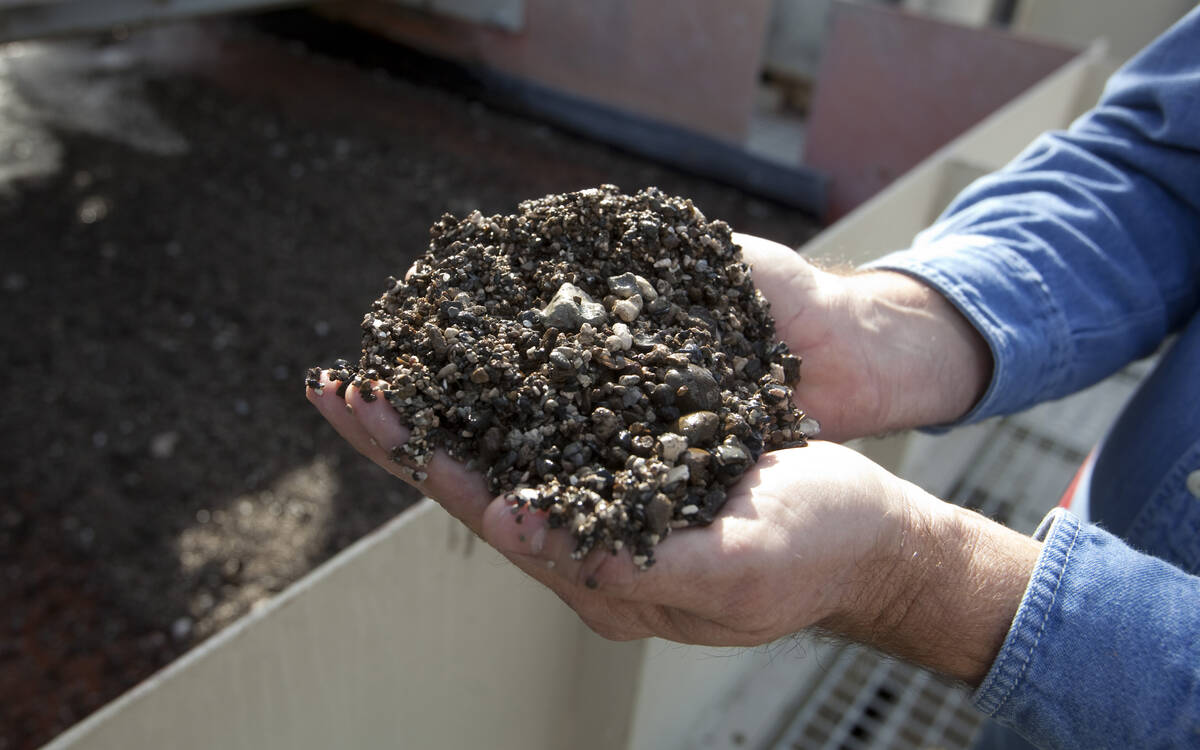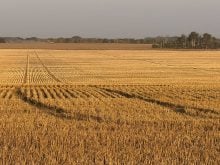ARDATH, Sask. – Ornamental metal wizard Darryl Turley can thank an agronomic decision for one of his more interesting creations.
Turley and his brothers, who grow crops and raise cattle on 2,000 acres in the Ardath area northwest of Outlook, Sask., have never regretted their switch to zero tillage 10 years ago, but soon discovered that zero-till discs wear out after three years. The result was mounds of discs that grew more out of control with every crop season.
What Turley did about it is why he is considered a metal wizard.
Read Also

Phosphate prices to remain high
Phosphate prices are expected to remain elevated, according to Mosaic’s president.
“One day my son and I got kind of radical with these things. We started cutting them into flower petals and we’d bend them up into shapes. We made these flowers out of them with rod and these discs. They weigh about 50 pounds apiece, these things. They’re massive, but I’ve sold quite a few.”
While he’s willing to follow his metallic muse into the realm of the unusual, most of his time in the shop is spent making practical objects such as railings, arbours and spice racks.
The metal bug bit when he was 11, after his father and brothers took a welding course.
“I wanted them to teach me how to weld but they were all too busy and Dad finally got frustrated and he said, ‘there’s the pile of rods and there’s the welder. Go at it.’ He was pretty good that way. He let me have free rein, as long as I didn’t cut up anything that was running.”
Turley’s steel skills evolved into heavy-duty mechanics, but in 1990, the Catholic church in Outlook was being rebuilt and the priest wanted to finish off the project with three metal crosses of various sizes.
Turley took on the job in the family’s garage. The crosses were a hit and word of his metal magic began to spread.
“People were always coming up with ideas. ‘Can you build this? Can you build that?’ “
Thus came the name he gave his burgeoning sideline – Ideas in Metal.
Much of what he builds is thought up by the customer, such as a baby gate built into an indoor hand railing or a spice rack for oversized containers, but he also keeps his own eyes peeled for ideas.
He has a photo album of pictures he’s taken of residential fences and handrails while roaming the older neighbourhoods of Saskatoon.
The photo album also contains pictures of metal candleholders his wife Pierrette took while attending a wedding. Even watching television and movies can spark the creative currents.
“You can get lots of good ideas just watching the background.”
A trip the Turleys took to Italy last spring to celebrate their 20th wedding anniversary was also creatively productive.
“That country is just full of it. They’ve been doing it for centuries. I got lots of good ideas from there.”
It’s the beauty in metal that gives Turley the most satisfaction.
“I really like to specialize in things that people want to look good, and leave the big commercial jobs to someone else because no one really looks at that stuff.”
Even so, he has done some of that work, including a man lift elevator for a former Saskatchewan farmer now farming in British Columbia. The man had a two-storey barn and needed something to lift heavy materials to the top floor. The elevator took Turley a week to complete.
Even more satisfying than the object itself, however, is creating the patterns, called jigs, which are needed to consistently shape the metal pieces. Some only take a few minutes to make, while others require a day or two, such as the one needed to make his garden arches.
Turley has passed on his passion to his son, 19-year-old Daniel, who started a business at age 14 making metal candleholders. Daniel still gets the occasional order, even though he’s now studying in Saskatoon to be a commercial pilot.
With a push from Daniel, Turley is branching into a new field by taking a step backward. Father and son have resurrected Turley’s grandfather’s blacksmith forge, which he can remember turning by hand for his father to work the fan and make the fire hotter. Daniel has already made fireplace pokers with it, but Turley predicts an inevitable modification.
“I think we’ll be converting it. Turning it by hand is too much work and you can’t fool a kid into doing that anymore.”
His metal business started to take off at about the time the family decided to build a large shop on the yard. While the extra space has given Ideas in Metal more room, the shop was intended to allow Turley to repair equipment and trucks for the farm and neighbours.
While Ideas in Metal pays for some heat and power, it’s his repair business that really helps supplement the farm’s income. However, he’s sure that could change with a bit of marketing effort.
“I think if a person advertised, I think it would just take off. I’m a little bit afraid of that, though, because I’m getting to the point where the farm takes up so much work. It’s hard to shut off a business at the beginning of seeding or at the beginning of April when you’re preparing for seeding.
Sometimes you’ll have a project and it will lag into seeding and you’re trying to catch up on it and do your own work. It gets to be pretty hectic and pretty hard on everybody.”
What he does hope for is that someday the metal business might become profitable enough that he no longer has to drive into Saskatoon during the winter to work as a mechanic with a farm equipment dealer.
While he realizes his metal hobby has the potential to be lucrative, he has no intentions of giving up farming.
“You can’t seem to turn your back on being 100 years in the family,” he said. “It’s pretty hard to turn your back on that and do something else, I find, anyway. By fall I’ve had enough of farming, though, so it’s a good way to spend the winter, pulling wrenches, welding and trying to get creative.”














